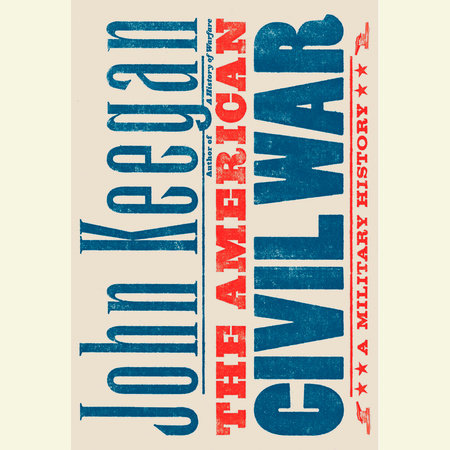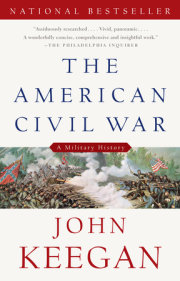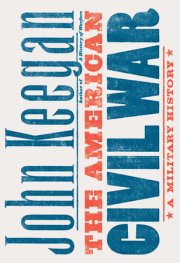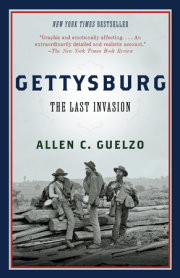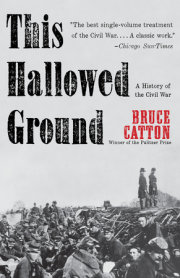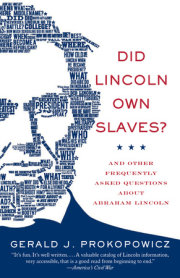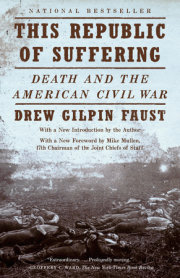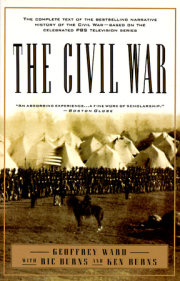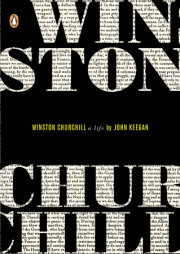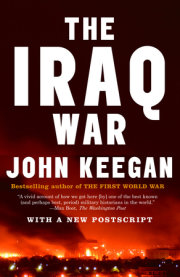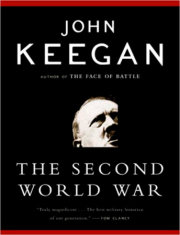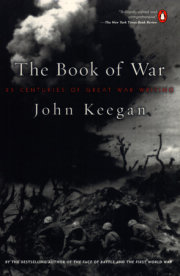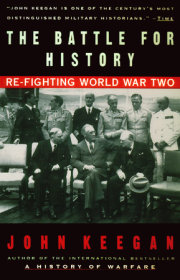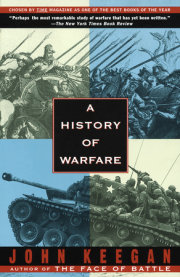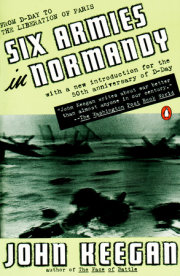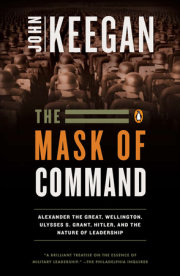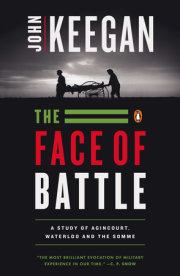North and South Divide
AMERICA IS DIFFERENT. Today, when American "exceptionalism," as it is called, has become the subject of academic study, the United States, except in wealth and military power, is less exceptional than it was in the years when it was to be reached only by sailing ship across the Atlantic. Then, before American culture had been universalised by Hollywood, the technology of television, and the international music industry, America really was a different place and society from the Old World, which had given it birth. Europeans who made the voyage noted differences of every sort, not only political and economic, but human and social as well. Americans were bigger than Europeans—even their slaves were bigger than their African forebears—thanks to the superabundance of food that American farms produced. American parents allowed their children a freedom not known in Europe; they shrank from punishing their sons and daughters in the ways European fathers and mothers did. Ulysses S. Grant, the future general in chief of the Union armies and president of the United States, recalled in his memoirs that there was "never any scolding or punishment by my parents, no objection to rational enjoyments such as fishing, going to the creek a mile away to swim in summer, taking a horse and visiting my grandparents in the adjoining county, fifteen miles off, skating on the ice in winter, taking a horse and sleigh when there was snow on the ground." It was a description of childhood as experienced in most prosperous country-dwelling families of the period. The Grants were modestly well-to-do, Jesse Grant, the future president's father, having a tanning business and also working an extensive property of arable land and forest. But then most established American families, and the Grants had come to the New World in 1630, were prosperous. It was prosperity that underlay their easy way with their offspring, since they were not obliged to please neighbours by constraining their children. The children of the prosperous were nevertheless well-behaved because they were schooled and churchgoing. The two went together, though not in lockstep. Lincoln was a notably indulgent father though he was not a doctrinal Christian. Churchgoing America, overwhelmingly Protestant before 1850, needed to read the Bible, and north of the Mason-Dixon line, which informally divided North from South, four-fifths of Americans could read and write. Almost all American children in the North, and effectively all in New England, went to school, a far higher proportion than in Europe, where literacy even in Britain, France, and Germany lay around two-thirds. America was also becoming college-going, with the seats of higher education, Harvard, Yale, Columbia, Princeton, the College of William and Mary, established and flourishing. America could afford to fund and run colleges because it was already visibly richer than Europe, rich agriculturally, though it was not yet a food-exporting economy, and increasingly rich industrially. It was a newspaper country with a vast newspaper-reading public and a large number of local and some widely distributed city newspapers. Its medical profession was large and skilful, and the inventiveness and mechanical aptitude of its population was remarked upon by all visitors. So too was the vibrant and passionate nature of its politics. America was already a country of ideas and movements, highly conscious of its birth in freedom and its legacy of revolution; anti-imperialism had been its founding principle. During the decades before the Civil War, America was experiencing an industrial boom and its own distinctive industrial revolution. England's industrial revolution had taken its impetus from the development of steam power, fuelled by the island's abundant deposits of coal and directed to the exploitation of its large deposits of metal ores. Early-nineteenth-century America was also beginning to dig coal and iron ore, of which its soil contained enormous quantities, but at the outset it was two other sources of power which drove its proliferating factories and workshops: waterpower and wood. The rivers of New England, New York, and Pennsylvania were harnessed to turn waterwheels and its extensive forests to supply timber for burning. In Europe the days were long gone when forests could be cut down to supply heat. The Continent, outside Scandinavia and the Russian interior, was highly deforested. In America, trees were still an encumbrance which had to be felled to provide land for farming, but which also, when sawn, provided the raw material for every sort of building and manufactured item. America needed deforestation if its soils were to be farmed in the future, and in that process industrialisation and land clearing went hand in hand. During the 1830s and later, New York City consumed several million loads of wood every year, cut and stripped from Maine and New Jersey. It was only gradually that mines were dug and extended, originally by immigrants from the English coalfields and Welsh valleys, but by 1860 production in the Pennsylvanian anthracite fields had increased fortyfold in thirty years. By that date a distinctive economic geography of the United States could be discerned, with expanding industrial regions centred on New York and Philadelphia, exploited coalfields in New Jersey, Pennsylvania, and the Allegheny region of the Appalachians, a developing industrial region around Pittsburgh, and a thriving textile and engineering zone in southern New England. In the North the proportion of farmworkers in the labour force had fallen below 40 percent, while it remained above 80 percent in the South. An economic map would show that there was no industrial centre south of a line drawn from St. Louis to Louisville to Baltimore; in the South nine-tenths of the population lived in the countryside, but in the North only a quarter. Timber also provided the steam power for paddleboats, which by 1850 were to be seen on every navigable waterway, and the railway locomotives, which were becoming familiar on the tracks which were stretching out to link all the more important cities to one another and to the seaboard ports. By 1850 there were 9,000 miles of track in the United States; by 1860, 30,000. Rivers and then canals had been the means of transportation and distribution in the early stages of the boom. Canal boats and river steamers were rapidly overtaken in importance by the railroad. By 1850, America had surpassed Britain, home of the railroad revolution, in miles of operating track; indeed, American track mileage exceeded that of the rest of the world put together.
The United States was still an industrial client of Europe, particularly Britain, from which most manufactured goods came, but that was due to Britain's head start in the industrial revolution. By the end of the century this would no longer be the case. In the meantime, America was ceasing to be a predominately rural country and becoming an urban one. At the outbreak of the Civil War, America had more country-dwellers than town-dwellers, many more in the South, but the trend was for town-dwellers to outnumber country-dwellers. Cities were being founded at a breakneck rate and growing at exponential speed. The old cities of colonial settlement, Boston, New York, Philadelphia, Baltimore, retained their importance, but new cities were appearing and expanding, particularly beyond the Appalachian chain and even beyond the Mississippi; for a time Cincinnati promised to be the most important of the new metropolises, but it was rapidly overtaken by Chicago, which grew from a population of 5,000 in 1840 to 109,000 in 1860. It might be said that Chicago was only keeping pace with the United States itself, whose population increased from 5,306,000 in 1800 to 23,192,000 in 1850. Part of the increase came from migration, though the decades of mass immigration lay in the future; most of it was the result of a high birthrate. The astonishing productivity of the United States furnished work for all who chose to stay in the towns, while the abundant availability of land for settlement in the new states beyond the Appalachians and the Mississippi attracted would-be farmers, or employed farmers seeking better land, in large numbers. In whichever direction a visitor to the United States looked, the country was growing.
It was not that America was giving up the land. On the contrary: in the twenty years before 1860 enormous areas of the subcontinent were put under the plough; but the work was done by internal migrants who abandoned their homes on the thin, worked-out soils of New England, Virginia, and the Carolinas to trek westward into the new land in and beyond the Mississippi and Missouri valleys. Federal land policy encouraged the migrants. In 1800 public land was sold at $2 an acre, with a quarter to be paid down and four years to pay off the residue. By 1820 the price had gone down to $1.25 an acre. Land was sold in subdivisions of a section of 640 acres. By 1832 the government accepted bids for a quarter of a quarter section, 40 acres. In 1862 Congress passed the Homestead Act, which allowed a settler free possession of 160 acres if farmed for five years. The legislation effectively transferred eighty million acres of public land into private hands, and accommodated half a million people. American land policy was the making of such states as Ohio, Indiana, and Illinois, the Middle West proper. As settlement moved on to the more distant lands of the prairies in Iowa, Kansas, and Nebraska, the first comers got the best of the deal. The prairies were settled during an uncharacteristic era of moist climate, which conferred bountiful crops on the hardworking. By the twentieth century, desiccation had set in and many farms joined the dust bowl.
Settlement was not exclusively by free men. Cotton profits pulled plantation owners westward into new lands during the period 1830–50, particularly onto the dark, rich soils of the "black belt" of Alabama and Mississippi, but even as far away as the river lands of Texas. It is calculated that 800,000 slaves were moved, by their owners, from the Atlantic coast farther inland between 1800 and 1860.
America was growing not only in population but also in wealth. Not yet an exporting country, except of cotton, its enormous internal market consumed all that could be produced. The whole of America was industrialising in the 1850s, particularly those parts settled since the eighteenth century: New England, Pennsylvania, New York, and some of Virginia. The industrialisation had its centre in Connecticut, which had both excellent river and canal connections with other parts of the region, and plentiful waterpower to drive factory machinery. Even as a pre-industrial economy, America wanted and bought the output of New England's workshops and factories, which worked by methods that would be copied all over the world. It was in Connecticut that what came to be called "the American system of manufacture" first established itself. The American system also became known as the "system of interchangeable parts," which is exactly descriptive. A well-educated and well-trained workforce learnt to make parts in metal or wood to such narrow tolerances that one manufactured item could be assembled from a random selection of parts. The American army's rifle, the Springfield, was such a product. It so impressed British visitors to the Springfield armoury that the British government bought the appropriate machinery to equip its armoury at Enfield for the Crimean War. When in 1861 the American government was gripped by demand for large quantities of rifles, the Enfield armoury supplied much of the need. Because the Springfield and Enfield products were manufactured in almost the same calibre, the Enfield being slightly larger, American cartridges fitted both quite satisfactorily, so well in fact that Union soldiers did not differentiate between Springfields and Enfields. Many good republicans thus went into battle with a weapon which bore the letters VR under a crown on the plate of the lock. The "system of interchangeable parts" also enabled the manufacture and assembly of clocks, watches, household and agricultural machinery, and the increasing number of labour-saving devices which American inventiveness brought to the world. America was chronically short of labour, both in town and country, so that any device that could multiply the work of a pair of hands was rapidly adopted. The sewing machine, which allowed housewives to dress themselves and their families at home or the local dressmaker to set up as a businesswoman, was widely adopted across America as soon as it was perfected. American farmers meanwhile were buying reaping machines, binders, and seed drills which could perform the tasks for which labour was lacking. The most significant element of mechanisation antedated the nineteenth century. It was the invention by Eli Whitney in 1793 of the cotton gin, a machine that separated the cotton fibre from the seed on which it grew, the boll. The gin revolutionised cotton production. A process which required a slave's hard labour for an hour to produce a pound of cotton could be completed by the machine in a few minutes. Little was turned into manufactured goods in the South, which, having sent raw cotton north to be spun, then had to buy it back as woven cloth or finished apparel.
The South's dependence on the industrial resources of the North underlay a visible social split. The South remained, as the North had been in the eighteenth century, agrarian and rural, with most Southerners living on the land and working as subsistence farmers, raising corn, hogs, and root crops, most of which they consumed themselves or sold locally, while the Northerners began during the nineteenth century to migrate from the land to towns in which they found wage-paying work. The readiness during the war of the two sides to fraternise at times of truce, formal and informal, and the willingness of both to be taken prisoner dispose of the idea that North and South were markedly different societies; despite the war, Americans remained American. Accent apart, and many Northerners complained they could hardly understand the way Southerners spoke, the soldiers of the two sides resembled each other much more than they differed. Both, in overwhelming majority, were country boys, in their twenties, farmers' sons who had left their land to join the army. Nevertheless, North and South were different, and the differences showed in the character of the armies.
Southerners were almost without exception small-town boys, or the sons of small farmers. Only a minority were slave owners. Of the South's white population of five million, only 48,000 were identified as planters, that is, men owning more than twenty slaves. Only 3,000 owned more than a hundred slaves, only 11 more than five hundred, truly staggering wealth in times when a fit, young field hand cost a thousand dollars. The white-pillared mansion, surrounded by shade trees and at a distance from the cabins of the field hands, existed, but more substantially in the imagination of outsiders than in reality. Of the four million slaves in the South, half belonged to men who owned fewer than twenty. Most owned only one or two and used them to work subsistence farms on which they raised corn—maize, to Europeans—and pigs. Most Southerners were hand-to-mouth farmers who owned no slaves at all.
Copyright © 2009 by John Keegan. All rights reserved. No part of this excerpt may be reproduced or reprinted without permission in writing from the publisher.

